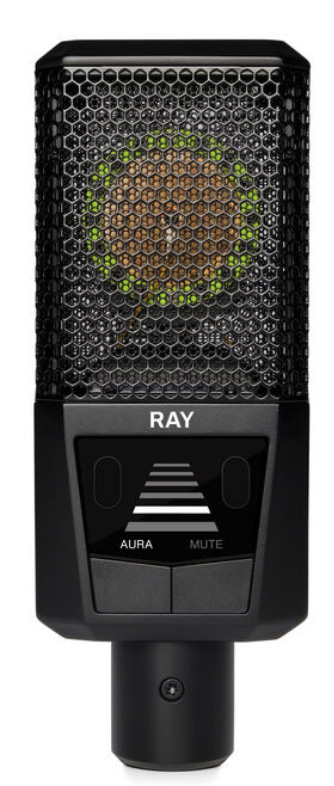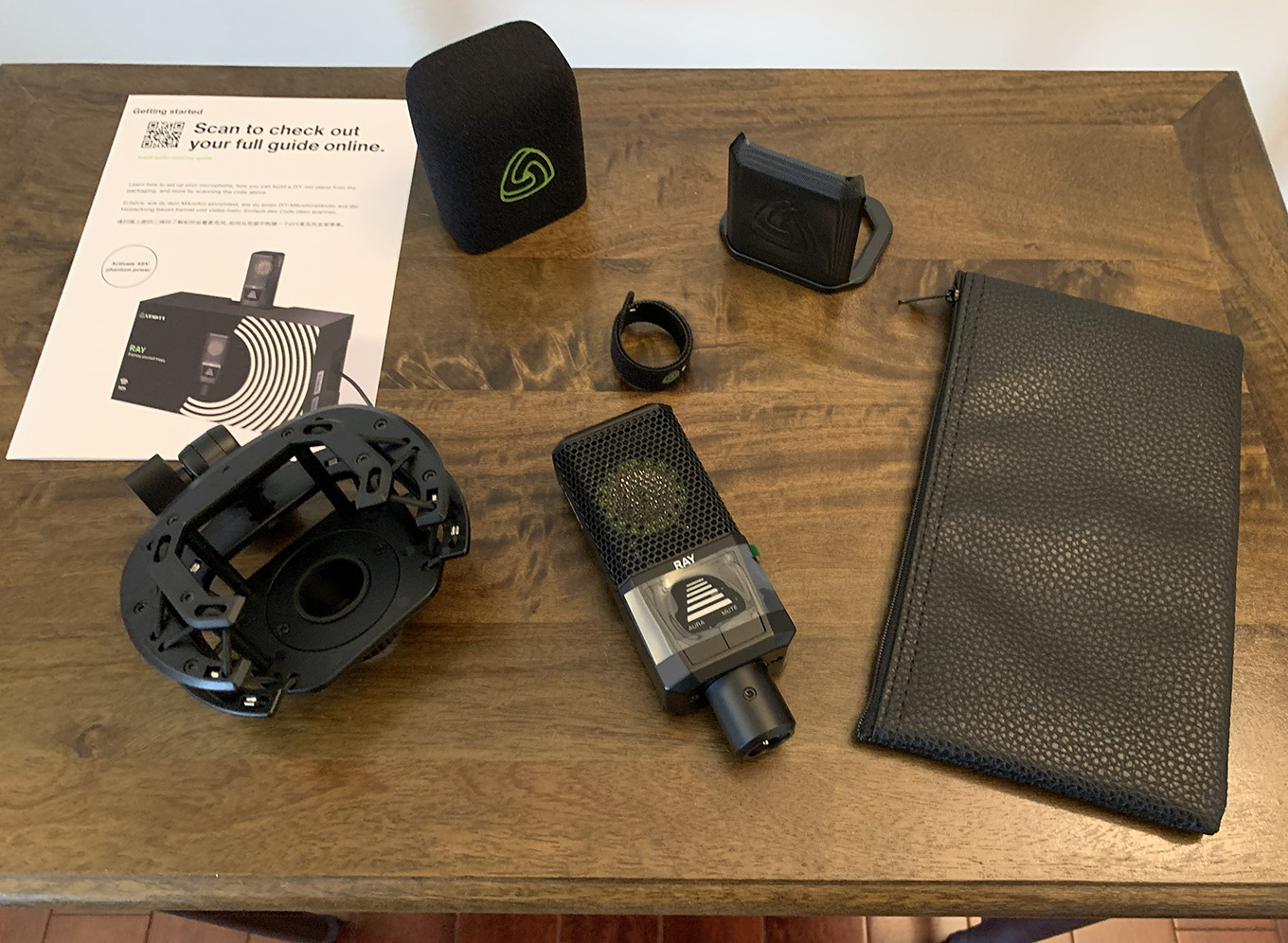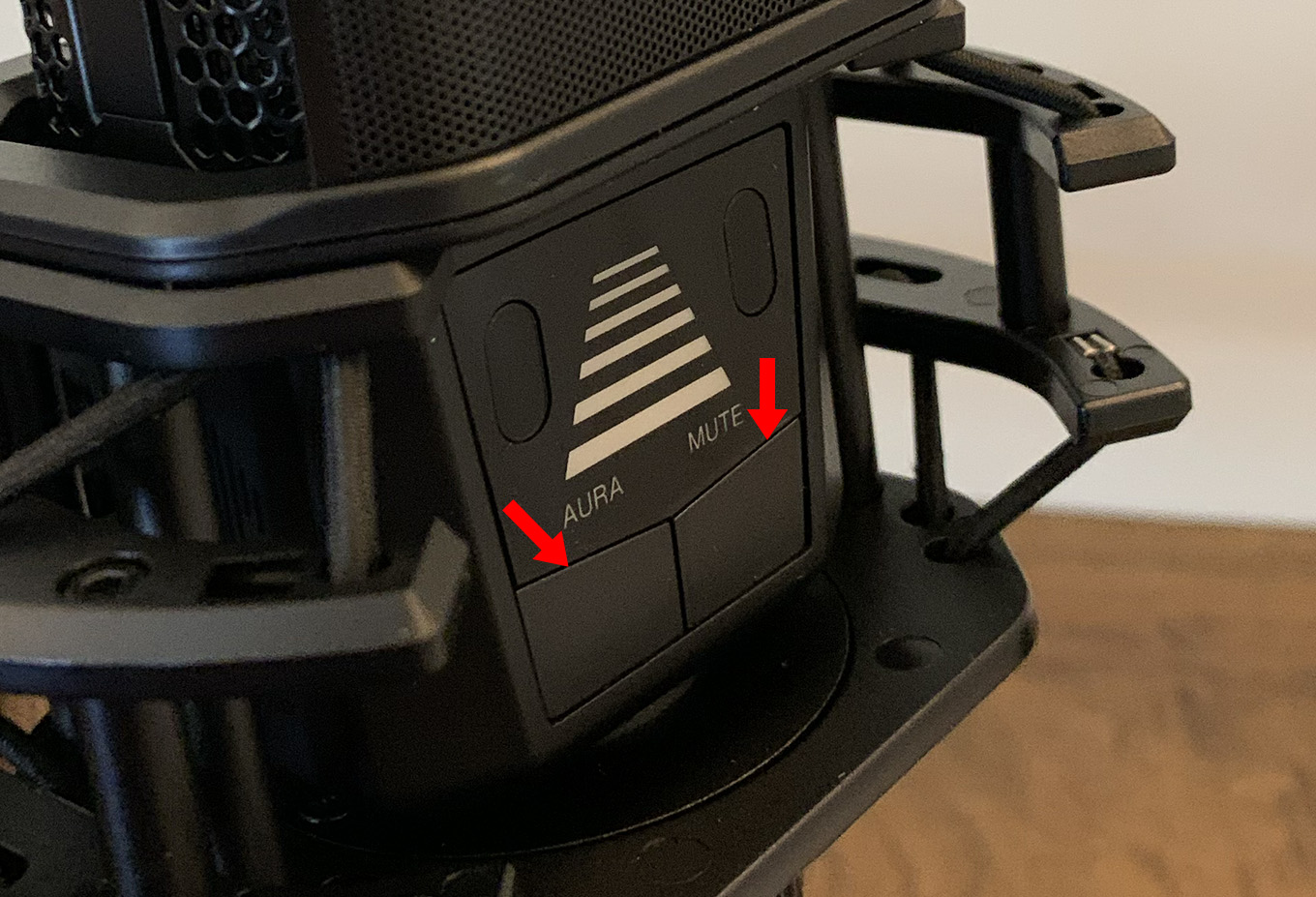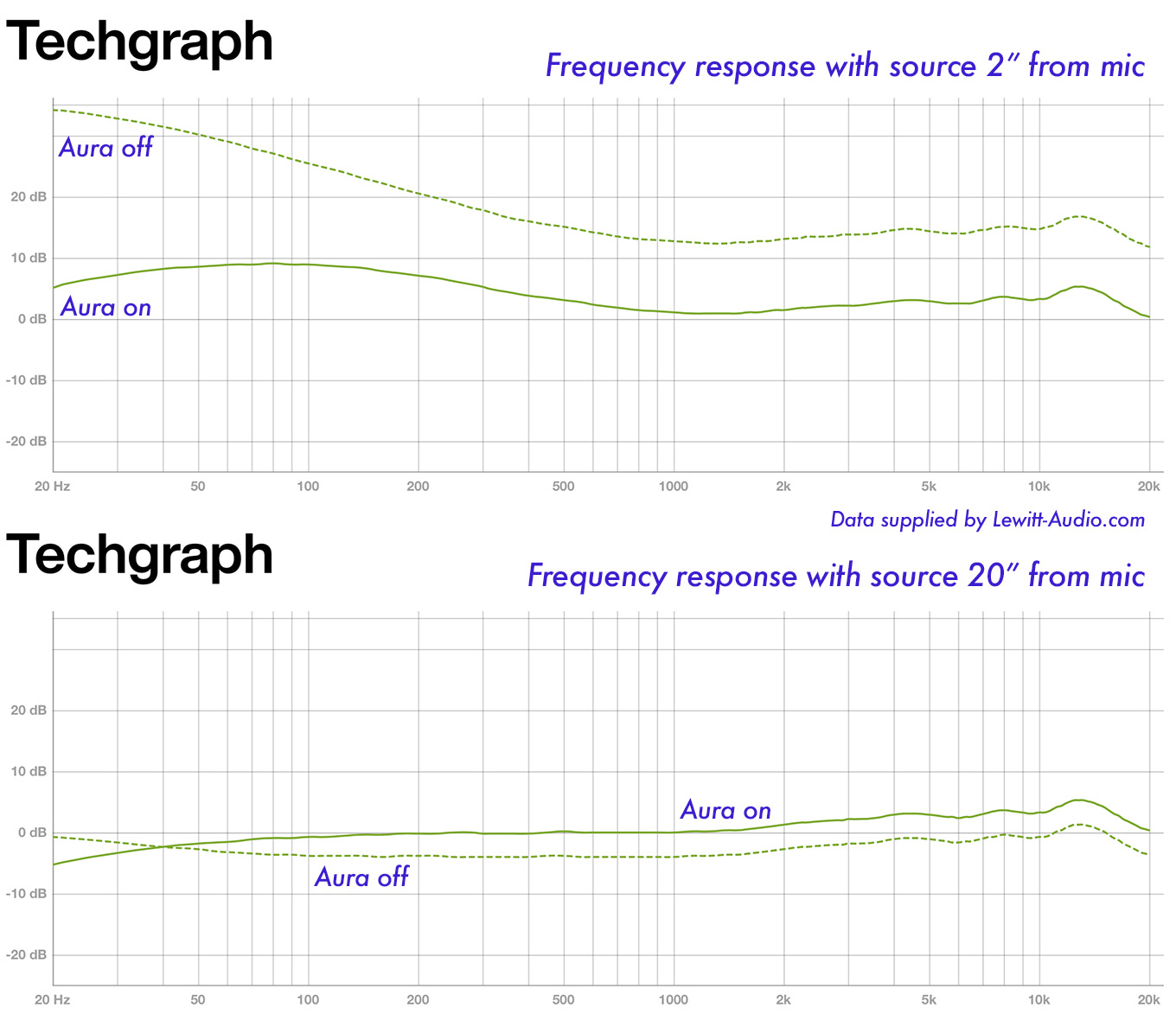 [ Read my product review disclosure statement here.]
[ Read my product review disclosure statement here.]
Let’s get one thing clear right at the very beginning: If a microphone doesn’t sound good, all the fancy buttons, lights and technology attached to it are not worth the money. The LEWITT RAY microphone, with AURA Technology, sounds good.
NOTE: I’m embarrassed to admit that I had not heard of LEWITT prior to this review. They were founded in 2009, are headquartered in Vienna, Austria, have more than 100 employees, and provide a wide-range of microphones and other audio gear.
Recently, LEWITT loaned me a RAY for a couple of weeks. Here’s what I learned.
 EXECUTIVE SUMMARY
EXECUTIVE SUMMARY
The LEWITT RAY microphone, with AURA technology, is a studio-grade XLR condenser recording or podcast desk mic with a built-in sensor that adjusts audio levels and audio quality as the speaker’s distance varies from the mic.
This is especially helpful when working with inexperienced – or hyper-active – speakers, who tend to move around a lot.
This analog mic requires an interface providing phantom power and preamp level control, as well as converting the signal from analog into digital audio. In my case, I used a Focusrite Scarlet 2i2. XLR connections are compatible with virtually every piece of analog audio gear on the planet, so you can use this mic anywhere.
NOTE: I was surprised that I needed to boost input levels almost full on the Scarlet to get good levels into Adobe Audition. However, even boosted that much, the audio signal was clean.
Audio quality is excellent with a rich lower-end and crisp highs – perhaps a bit too crisp as it almost gave my voice a lisp. I compared it to three other mics: AKG C520 headset, Shure SM58 desk mic, and Warm WA-87 vocal mic. As you’ll hear in the audio tests below, it sounded better than the AKG or Shure and compares favorably with the $600 Warm studio mic. I was not expecting that level of audio quality.
Fancy touches like focusing the audio based upon speaker distance and a mute switch are nice, but not compelling. What IS compelling is the sound. And that’s the reason you buy a mic in the first place.
Manufacturer: LEWITT
Product: RAY
Website: https://www.lewitt-audio.com/ray
Price as tested: $349
IN THE BOX

The RAY ships nicely packaged with a minimum of plastic. In the box are:
The pieces are well-designed and manufactured, and assemble easily. In fact, the pop filter is magnetic, so if the mic is turned upside-down, the filter won’t fall off.
Here’s what the mic looks like all put together. Left is the bare mic nestled in its shock-mount, center is the mic with apop filter and right is the mic with a windscreen.

The mic requires a mic stand which is not supplied, but, in a pinch, you can use the box; as this support guide illustrates.
SPECIAL FEATURES

The mic has several special features worth noting:
From my perspective, mute by distance is a cool feature, but I would never trust it. I much prefer pressing a physical button on a mixer, than assume that a mic is dead. Also, when using this as a podcast/narration mic, I could never get far enough away for this feature to activate, so I don’t know how well it works. It did not enable when I move about a foot away from the mic.
UPDATE: After I wrote this review I learned that the user can set the distance that triggers this feature. The steps are covered in the User Guide.
As for the mute button, I would never let a ham-fisted, nervous talent stab a quivering finger at a mic to mute it. It would sound like the mic was in the middle of a boxing match. (You may have a more delicate touch, but none of my guests do.)
LISTEN FOR YOURSELF
NOTE: All audio samples were recorded directly using a Focusrite Scarlet 2i2 preamp and A/D converter. No EQ or audio processing was added, except in two cases where I adjusted the levels between the four different mics and boosted the AURA levels in the AURA comparison to make the clips easier to compare.
Here are four audio recordings I created so you can hear the mic for yourself. First is a comparison between four different mics – the LEWITT RAY, AKG C520, Shure SM58, and Warm Audio WA-87a.
Compare the sound of four different mics
What impressed me here was the clarity of the RAY. When used as a podcast/narration mic, it had a full, warm sound with some extra emphasis in the high frequencies. It compared favorably to all three other mics.
Next is a test of the AURA technology, which I believe is enabled by default. AURA works, but when it is turned on, it dropped audio levels about 10 dB. This means you’ll need to boost levels a lot when recording the mic with this feature.
Hear the difference between AURA on or off
NOTE: I tend to record narration mic levels around -12 dB to allow room for people to get emotional. I’ll adjust final levels in the mix.
Next is an illustration of the “Proximity effect.” That’s the tendency of a mic to sound warmer, richer and “sexier” the closer you get to it. This is also the reason many DJs and radio announcers tend to “swallow” the mic.
Illustrating the “Proximity Effect”
Most mics are optimized for the speaker to talk to the side of the mic that has the logo. In the RAY’s case, though, you need to talk to the other side with the AURA runway. This link compares what happens if you talk to the wrong side of the mic.
Make sure you talk to the correct side of the mic

With a microphone, just as with a monitor speaker, you generally want to see a flat frequency response. That means that you are recording the actual sound accurately. In the top graph, notice how bass frequencies are emphasized when your mouth is very close to the mic and the AURA technology is turned off. This is the classic definition of “Proximity Effect.”
At normal podcast/narration distances, the mic boost (warms) the low frequencies and remains flat throughout the rest of the audio spectrum. This generally provides a nice, warm sound for narration.
NOTE: I commend LEWITT for displaying the different frequency responses based upon sound source distance from the mic. Most audio companies don’t do that.
THINGS I WOULD IMPROVE
Here are some small things LEWITT should consider improving:
SUMMARY
The LEWITT RAY microphone, with AURA technology, is a well-designed, well-built, good-sounding mic that has a sound worthy of its price. The Aura technology works and, for some, will be a valuable mixing assistant. I was not expecting to be impressed. But I am and, once you hear it, you will be too.
One Response to Review: LEWITT RAY Microphone, with AURA Technology
Thanks, as always, for your thoughtful review! Never heard of the company before, but might try one! Keep up the good work…